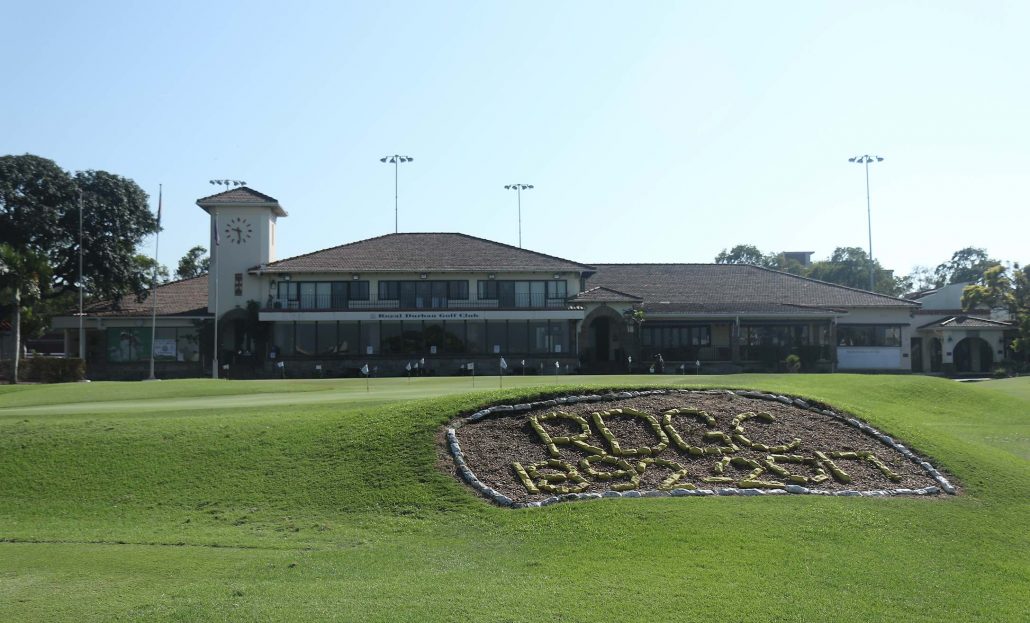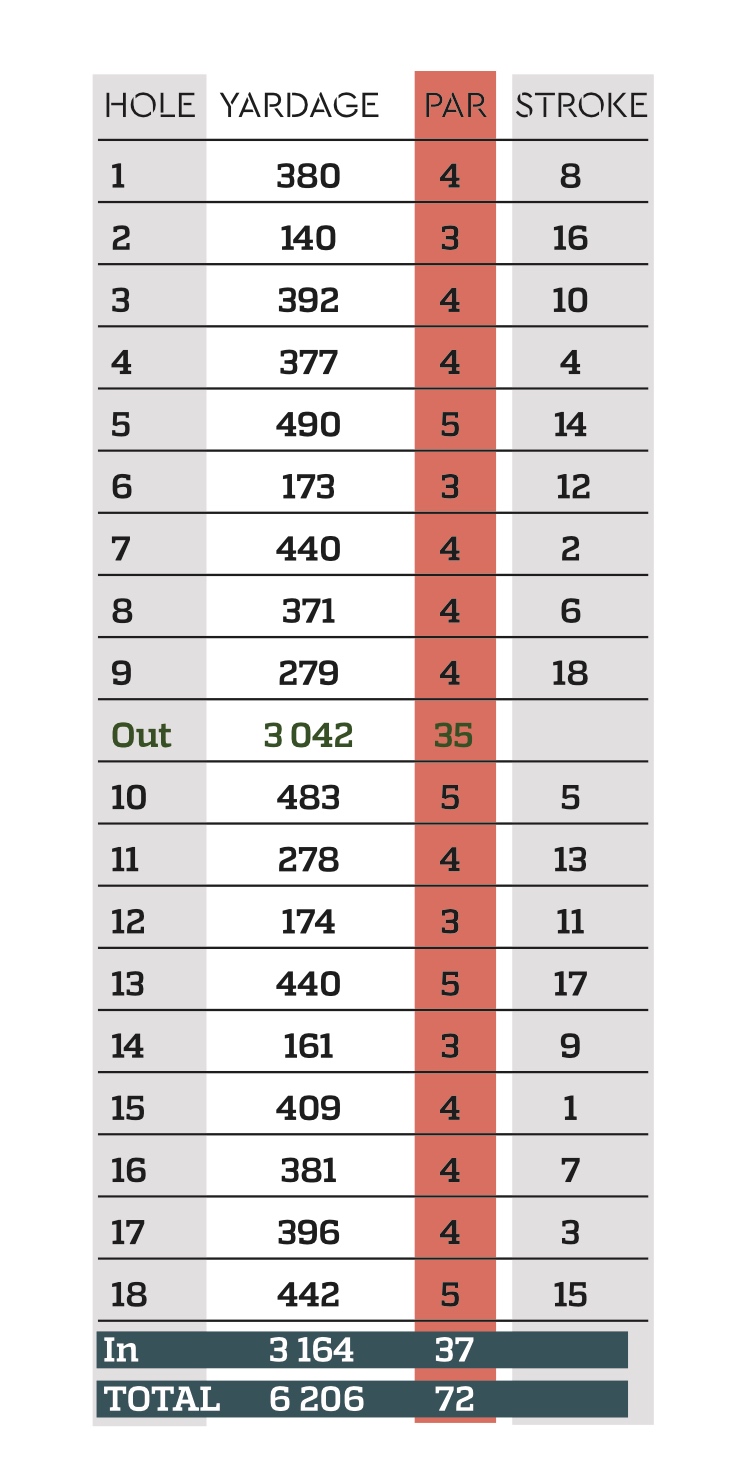For 130 years, people have been smashing golf balls at Royal Durban Golf Club inside the famous Greyville racetrack, writes SIMON OSLER.
Durban Golf Club, built on reclaimed marshland within the confines of the Greyville racetrack, was opened by John Watt in 1892 and for the first 40 years it was, to put it kindly, a bit rough. There were with no planted fairways, merely ploughed grounds and the ‘greens’ were patches of scuffed clay.
But in 1932, legendary course architect Bob Grimsdell was commissioned to redesign the links-style course … and from the rough a diamond emerged, with a clubhouse of some substance replacing a wood and tin structure. In that year, too, the club was granted a Royal title on the recommendation of Prince Edward, who visited in 1925. It is one of only four courses in South Africa which received the Royal seal of approval, the others being Royal Cape, Royal Johannesburg & Kensington and Royal Port Alfred.
Grimsdell’s design was handicapped by the ruling that no tall vegetation was permitted to obscure the views of the racecourse from the grandstand, but that has not prevented the course from playing tough. The course’s main defence had to become the thick rough which now punishes anyone straying from the fairways, while the wind comes to its aid for at least six months of the year.
Royal Durban Golf Club has staged numerous top-flight events, including the 1970 SA Open which was won by Tommy Horton of England, and the 1985 SA Open when Gavan Levenson beat Phil Simmons to the title.
In 1975 the Commonwealth tournament was played there, and among the luminaries in the field were rising stars Sandy Lyle of Scotland and Nick Faldo of England. Latterly the club has produced a number of top amateurs and professionals, the best-known being Rory Sabbatini who has won half a dozen times on the PGA Tour circuit and turned his talents into almost $36-million in career earnings.
In the amateur days the powerful Royal team cleaned up in the Natal league. In 1994 the side captained by former South African cricketer Pat Trimborn included Sabbatini and his elder brother Gary, Melville Muir, Warren Abery, Keith Horne and Bradley Davison, the latter three also turning professional and having successful careers.
The course has undergone several routing changes over the years, so we will examine it as it currently plays with the opening hole adjacent to the finish line of the racetrack.
Appropriately, as it is so close to the racecourse, the counter-clockwise outside loop of the golf course can be a bit of a ‘mare’ for those who fade the ball, with the track and out of bounds being forever in one’s eye. Conversely, for those who draw the ball, it is a pleasure to play the course with confidence as you move the ball away from the trouble all the way round.
The opening hole is a 380m par four and dead straight, from north to south. The prevailing wind is a north-easterly which will shorten the hole but push your ball towards the out-of-bounds fence. There’s plenty of place to bail out to the left but the longer hitters can bring water into play there, not to mention a dozen or so palm trees blocking the approach to the left side of the slightly raised green.
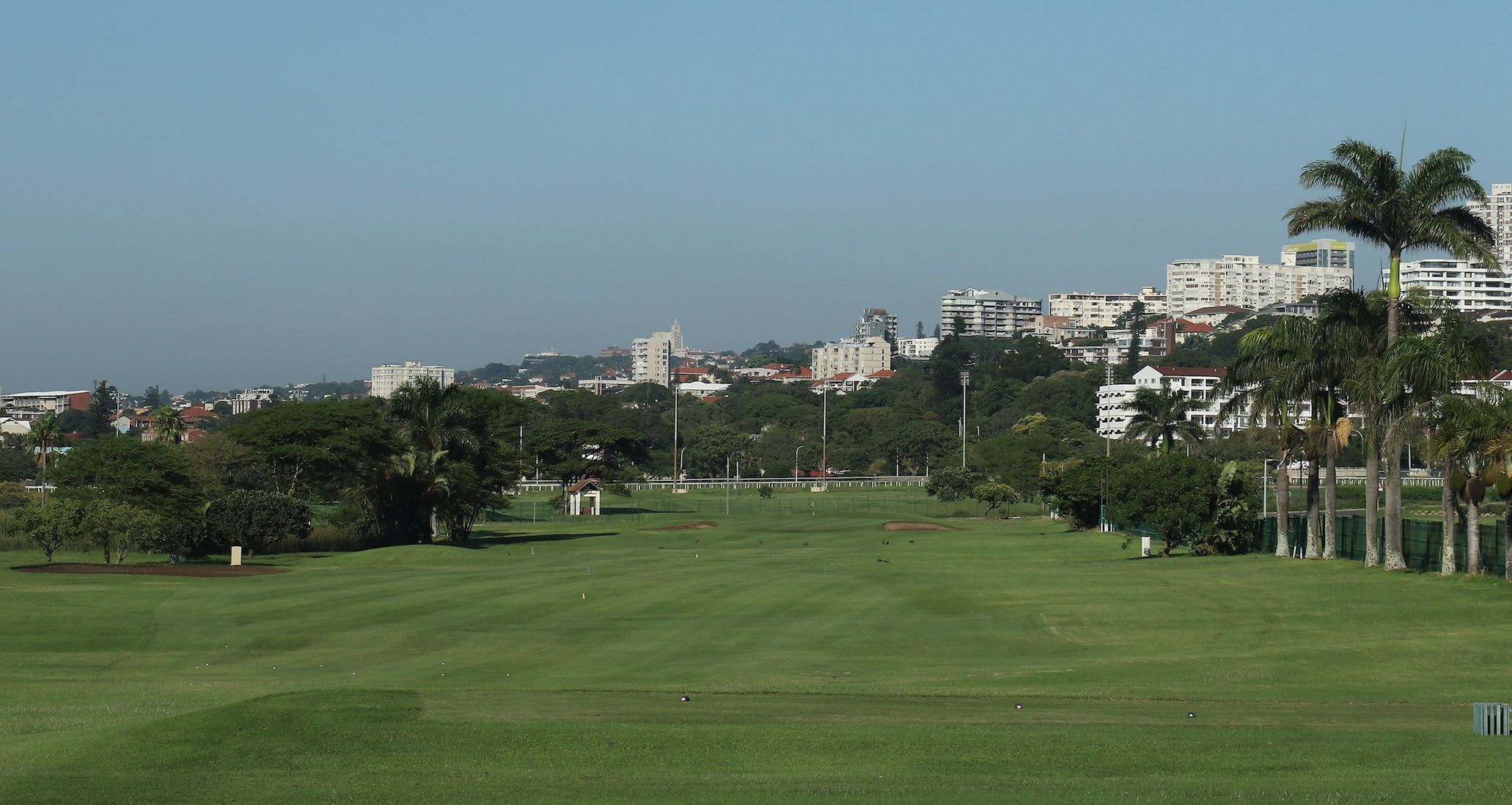
Cross over the road to the par-three 2nd. Playing at 140m, the safe option is to take an extra club and make sure you clear the trouble – the five bunkers that form a crescent in front of the green. There’s no trouble at the back.
The 3rd is a long par four with a slight dogleg left. Your tee shot plays a little downhill but your approach plays due east and into the wind so you might want to consider taking one more club. Being just short of the green is the safest option as it takes the greenside bunkers out of play and will leave you with an uphill putt from just off the fringe. Definitely worth considering – there are many places on this course where using the ‘Texas wedge’ short of the green can reap rewards.
Then comes one of the more challenging holes. The 4th tees off across a canal, and its ribbon of a fairway meanders towards the right of the hole, meaning it is possible to flirt with the racecourse and the out-of-bounds stakes. Go too far left and you will be in the dam which is hidden behind the tall reeds. There’s plenty of gnarly rough left of the fairway – on a straight line from tee to green you will find it tough to miss. There is a bunker on the left about 20 yards short of the green.
The 5th is the first of the par-five holes and plays a sharp dogleg right. At 490m, it is not overly long, but you have to play it strategically. A straight drive for the big hitters might reach the canal, so they need to work out how much of the ‘elbow’ they can cut off without bringing the dam on the right into play. Again, there’s lots of thick rough to tackle but use it if need be. A safe way to play the hole is to hit driver, 8-iron, 8-iron to the middle of the green and try to hole the putt. If the wind is coming strongly from the south, substitute a pitching-wedge for the 8-iron. The green is narrow at the front, which is guarded by a bunker on each side, and much wider as you go further towards the back.
Next up is the 173m par-three 6th to a multi-layered green with trouble on the front right. It usually plays into the wind, so take an extra club or two.
The 7th is a great hole. It has been set up as an easy par five in the past but is currently a par four, stroke two. Running parallel to the road which bisects the course, try to avoid the out of bounds on the right, not to mention the palm trees which are scattered along the right of the fairway. But if you pull or hook your tee shot you bring a hedge into play and that is almost as much trouble. Your tee shot’s ideal landing area is on one of the narrowest spots of closely mown vegetation on the course. From there you might still need a long-iron or hybrid to reach the narrow and deep green which is protected by bunkers on both sides.
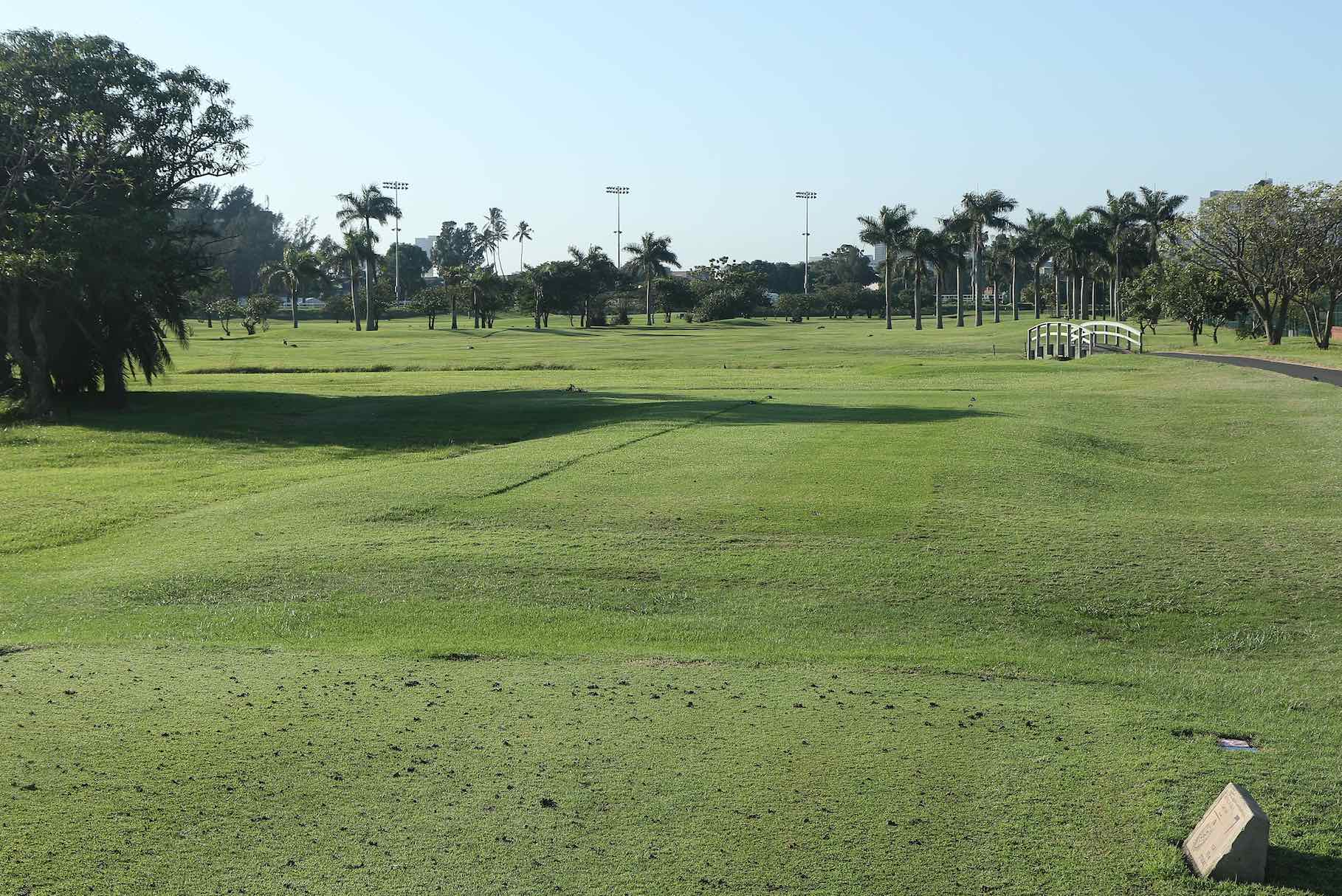
A 90-degree turn and the 8th again takes you parallel to the racecourse. It isn’t a long par four but getting the second-shot yardage accurate is key to keeping your score respectable on this hole. There’s a deceptive depression of ‘dead ground’ covering about 50m short of the front of the green which tends to be quite soft as we remain only just above sea level.
The par-four 9th is the signature hole (see below).
The second nine starts with what at one stage was the opening hole, a 483m par-five 10th. It is a no-pressure tee shot, other than a small hidden pond at around 200m on the left of the fairway. There’s a bunker in the middle of the fairway about 70m short of the green which will catch the errant second shot of the short hitters, and a raised green which is long and narrow with bunkers protecting it front and right.
Then there’s yet another drivable par four, being just 278m. Even the shorter hitters can get there with a short club in hand for the second shot. The large bunker down the right-hand side of the green faces the tee box and gobbles up many a big hitter’s drive. Often the shorter hitters are able to score better by playing down the fairway and then hitting a second shot without the bunker in the eye-line.
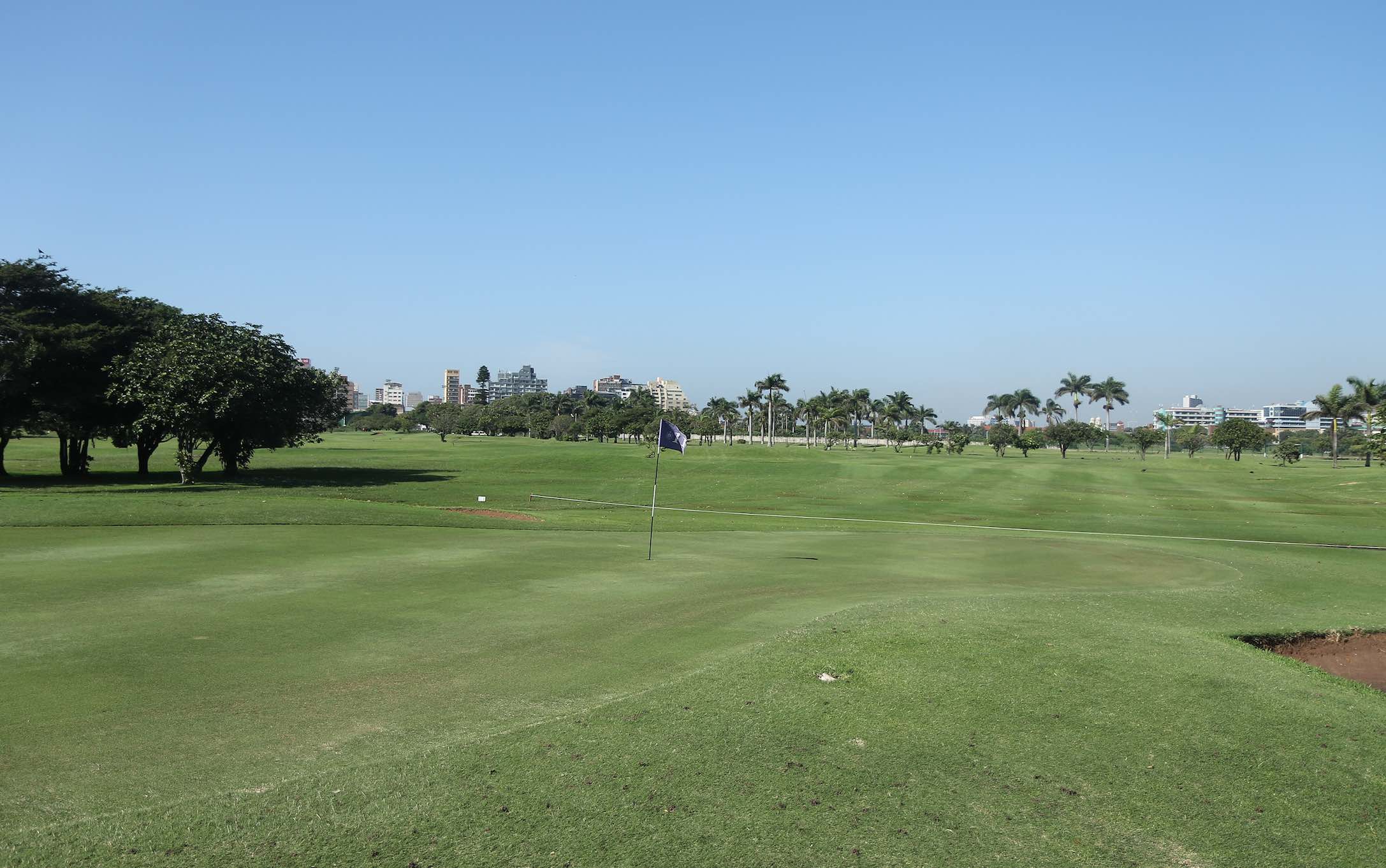
At 174m the par-three 12th is the longest of the ‘short’ holes and plays considerably shorter as it is usually downwind. There is lots of landing area short of the green and a conservative shot is often the safest – go hard at a mid-iron and risk bringing the ponds down the right into play.
Cross back over the road to the easiest of the par fives on the course. At 440m it’s definitely reachable in two and a potential birdie opportunity. The water on the right is only fractionally in the eye and should not be in play at all.
Next up is the last of the par threes and it is the toughest despite not being overly long at 161m, although it plays back into the prevailing wind. Adjacent to the hole is the Royal Durban Light Infantry (RDLI) headquarters, so yet again there is out of bounds on the right. At the green there are three bunkers on the left and a large one on the right.
Having survived that, the stroke-one par-four 15th awaits. The usual pattern of ‘out of bounds on the right’ occurs one last time for your round. Big hitters can reach the canal around 280m away with their tee shots but it is out of reach (but in the mind, especially when there is a straight easterly blowing) for the medium hitters.
Opposite the out of bounds are two shallow bunkers on the left of the fairway where many people will be bailing out with their drives. The green is still reachable from them. A long shot in to one of the biggest greens on the course which has a bunker on the front right and down the left-hand side is the only protection the hole has.
The 16th is a fairly short and straight par four. There’s no out of bounds, but at driving distance there is a dam on the right. Bailing out way to the left is an option. Then it’s on to the 17th tee box. The water is in play down the right but again there are acres of space down the left. It takes a good second shot to reach the green which is 396m from the tee, and is usually into the wind and slightly uphill too. Bunkers left and right make the green on this stroke three one of the toughest to hit in regulation.
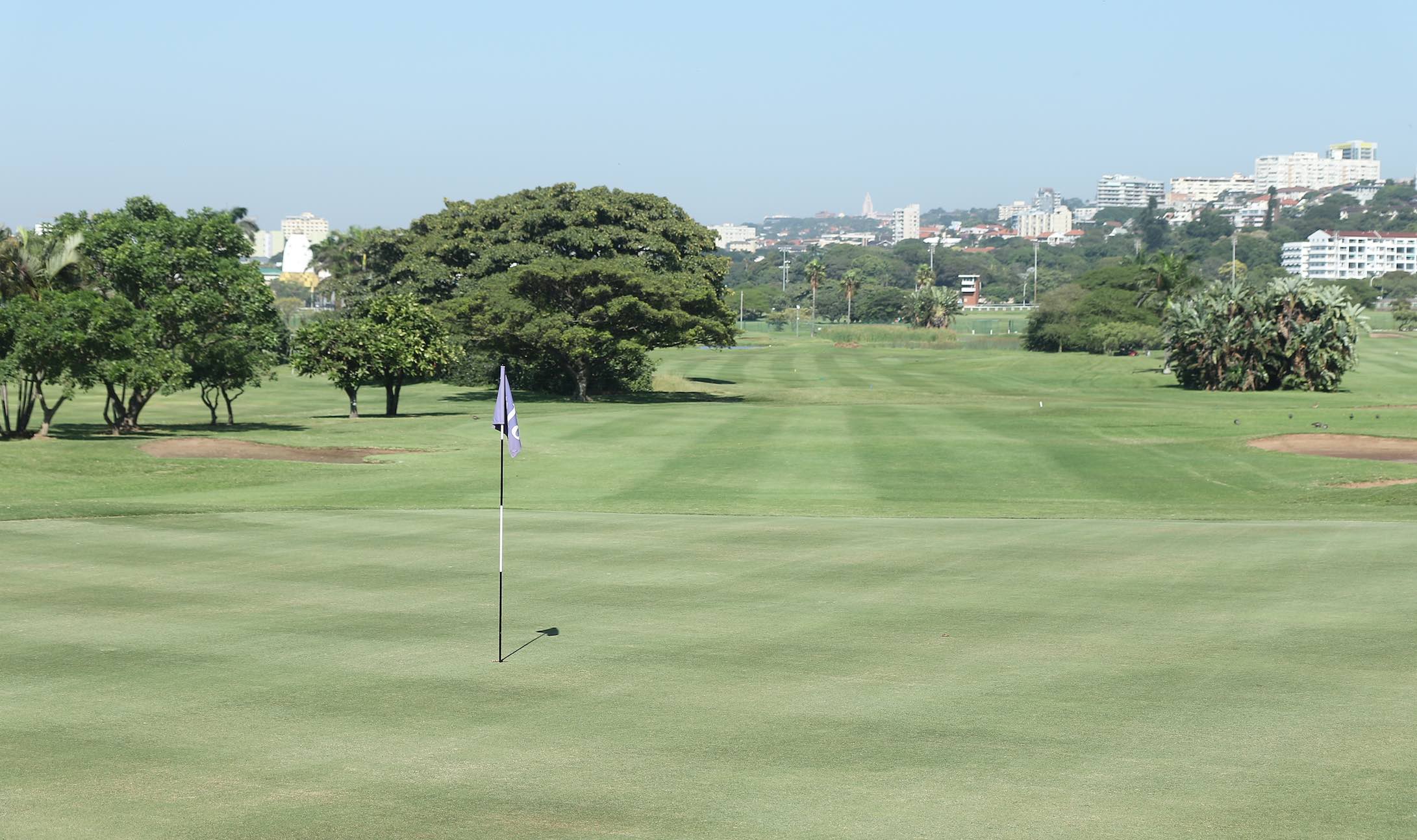
Then it’s back over the road to the 18th which is a fairly short par five. The canal is down the right-hand side of the hole, at driving distance. Aiming left is not a bad play and if you can clear the fairway bunker you should have a chance of going for the big green. Long is a no-no, as it’s out of bounds in front of the halfway house and clubhouse. A cold drink on the verandah has probably been well-earned.
SIGNATURE HOLE
9th hole, 279m, par four
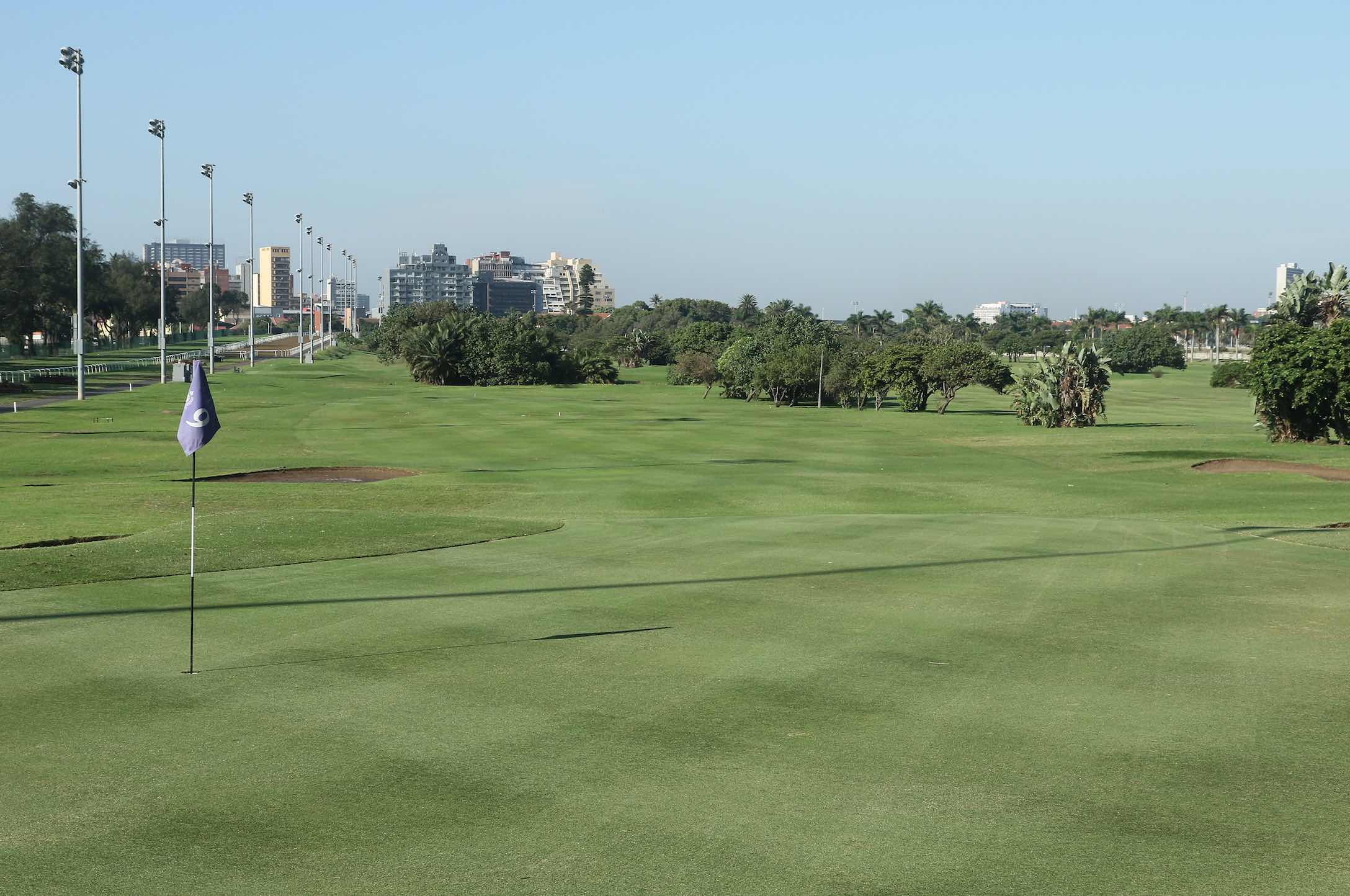
While many courses have a par three as their signature hole, Royal Durban has a short par four as theirs.
At just under 280m, the green is reachable by the bigger hitters when the north-easterly wind isn’t blowing, but there is plenty of protection for the hole with five bunkers in play near the green.
Long is no good, while right is out of bounds, in keeping with more than half of the holes on the course. Left brings a row of small trees into play.
The conservative approach would be to hit a medium-iron or hybrid to the middle of a generous fairway and be left with a wedge in to a green which runs almost 30m deep and offers a couple of tricky pin placement options.
The raised green slopes severely from back to front and drains very well. Balls often run off the front if they have not made it over the mound about a quarter of the way on to the green.
The bunkers on the left are shallow and spend most of the day in the shadow of a large rubber tree which affects how dry they are, while the longer bunker down the right has a much higher lip to clear and helps form the ‘basin effect’ towards the middle third, with the ball feeding down to the centre of the green.
Anyone who scrambles well should walk away with par or better on this hole.
Is it the most impressive or exciting hole on the course? I don’t think so. In fact, the 3rd, 4th, 7th and 16th all offer more memorable challenges and views if you are going to pick a par four.
I would suggest that the 16th, with its birdlife, including pelicans, cormorants and occasionally fish eagles at the water down the right, and views southwards towards the city, makes for a more picturesque setting.
GREENFEES
Club members: R280
Senior members: R250
Student members: R150
Ladies full members: R280
Visitors
Non-affiliated members: R450
Affiliated members: R380
Golf carts: R300
ROAD DISTANCES
(FROM, ESTIMATED)
Johannesburg: 568km
Pretoria: 618km
Bloemfontein: 635km
East London: 659km
Mbombela: 679km
Kimberley: 797km
Gqeberha: 912km
Cape Town: 1,636km
GETTING THERE
From King Shaka Airport: Get on the N2 from the M65. Continue on the N2. Take Ruth First Hwy/M4 to Argyle Rd/Sandile Thusi Rd/M17 in Stamford Hill. Continue on Sandile Thusi Rd/M17 to your destination in Berea.
GPS CO-ORDINATES
-29.8447°S, 31.0139°E
ADDRESS
Gate 16
Gladys Manzi Rd
Greyville
Durban
4011
CONTACT DETAILS
Tel: (031) 309-1373
Email: [email protected]
WEB DETAILS
– This article first appeared in the May 2022 issue of Compleat Golfer magazine. Subscribe here!


